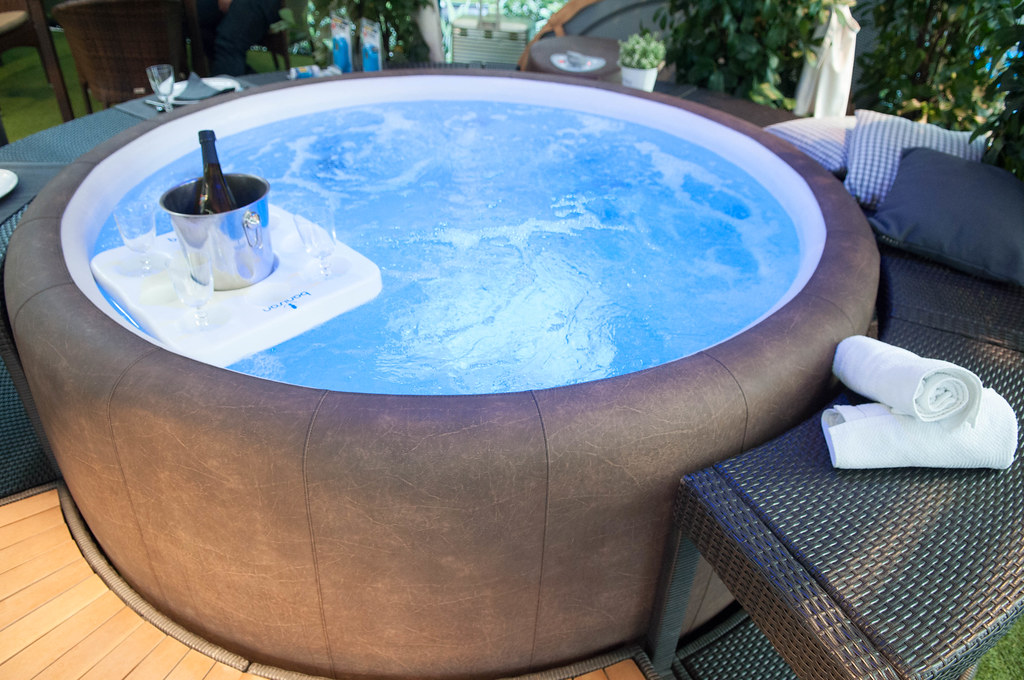
Key Takeaways
-
Hydrotherapy can enhance blood circulation in the skin, which is crucial for individuals with diabetes.
-
Warm water baths and whirlpools are beneficial types of hydrotherapy that can be tailored for diabetic skin care.
-
It’s essential to monitor water temperature and session duration to avoid skin damage.
-
Consistent moisturizing and proper hydration are key complementary practices for maintaining healthy diabetic skin.
-
Always consult with a healthcare provider before starting any new hydrotherapy routine.
What is Hydrotherapy?
Imagine stepping into a pool of warm water, feeling the gentle waves against your skin, and experiencing a sense of relaxation washing over you. This isn’t just a spa day treat; it’s hydrotherapy—a practice as ancient as it is effective. Hydrotherapy, at its core, is the use of water in various forms and temperatures to promote health and healing. The water can be ice cold or steamy hot, still or moving, in a tub or as a compress. For those managing diabetes, it’s a soothing balm for circulation woes.
Why Diabetic Skin Needs Extra Attention
Diabetes can be a demanding condition, especially when it comes to skin health. High blood sugar levels can cause blood vessels to narrow and harden, impeding circulation. This means less oxygen and fewer nutrients reach the skin, which can lead to a host of problems, including slow healing wounds and infections. Therefore, boosting blood flow is not just a matter of comfort; it’s a crucial step in diabetic care.
Types of Hydrotherapy Beneficial for Diabetics
Warm Water Baths
Let’s dive into warm water baths. They’re not just for relaxation; they can be a powerful ally for your skin. Immersing in warm water opens up blood vessels, a process known as vasodilation, which increases circulation. But remember, the water should be warm, not hot, to prevent skin damage.
Whirlpools and Jacuzzis

Whirlpools and Jacuzzis add another layer to hydrotherapy with their massaging jets. These jets help stimulate blood flow to the skin, not just through heat but also through the gentle pressure of moving water. It’s like giving your skin a mini workout, boosting circulation with every ripple.
Steam Rooms: Are They Safe for Diabetics?

Steam rooms might seem like a good idea for opening up pores and promoting sweat, but they come with a caveat for diabetics. The intense heat can be too much for diabetic skin, which may already have reduced sensation due to neuropathy. Always check with your doctor before stepping into the steam.
The Science Behind Enhanced Blood Flow
When we talk about hydrotherapy for diabetics, we’re focusing on its ability to enhance blood flow. But how does this work? Warm water causes your blood vessels to expand, which allows more blood to flow through them. This process, known as vasodilation, is beneficial because increased blood flow means more oxygen and nutrients are delivered to your skin, which is crucial for healing and overall skin health.
Research shows that the moisture from the water plays a significant role in this process. It’s not just the heat that works wonders, but the hydration effect on your skin. The combination of warmth and moisture from hydrotherapy can help to increase skin blood flow, which is especially important for those with diabetes who may have compromised skin circulation.
Hydrotherapy in Practice: Real Benefits for Real People
Hydrotherapy isn’t just a theory; it’s a practice that has helped many people with diabetes manage their skin health better. By incorporating regular hydrotherapy sessions into their routine, individuals have reported improvements in skin texture, faster healing of minor wounds, and a decrease in the occurrence of skin infections.
Planning Your Hydrotherapy Routine
To get started with hydrotherapy, you’ll want to plan your routine carefully. Begin with shorter sessions, perhaps 10-15 minutes in warm water, and observe how your skin reacts. Gradually, you can increase the duration as long as you feel comfortable and see positive results. Always ensure that the water is not too hot; a good rule of thumb is to keep it around 92-100°F (33-37°C).
Success Stories: Diabetics Who Tried Hydrotherapy
“After starting hydrotherapy, I’ve noticed my feet feel less numb and my skin doesn’t crack as much. It’s become a part of my life now,” shares John, a 58-year-old with type 2 diabetes.
Safety First: Hydrotherapy Precautions for Diabetics
While hydrotherapy can offer numerous benefits, safety should always come first. As a person with diabetes, your skin might be more sensitive, and you might not feel temperature in the same way due to neuropathy. Therefore, it’s crucial to always check the water temperature with a thermometer or have someone assist you to ensure it’s safe.
Another important precaution is to thoroughly clean and disinfect any tub, whirlpool, or pool you plan to use. This minimizes the risk of infection, a serious concern for diabetic individuals.
Finally, always keep hydrated by drinking plenty of water before and after your hydrotherapy sessions. This helps your body manage the effects of the increased blood flow and temperature changes.
Consulting with Your Healthcare Provider
Before you jump into hydrotherapy, it’s important to consult with your healthcare provider. They can give you personalized advice based on your current health condition, diabetes management, and skin health. They might suggest specific hydrotherapy treatments that would work best for you or advise you on the frequency and duration of your sessions.
Managing Temperature and Duration
When it comes to hydrotherapy, managing temperature and duration is key. As mentioned earlier, keep the water warm but not too hot. Stick to recommended times, starting with shorter sessions and only increasing when you’re sure your skin can handle it. And always, always listen to your body—if something doesn’t feel right, it’s time to get out of the water.
Supporting Your Skin: Additional Diabetic Skin Care Tips
Besides hydrotherapy, let’s talk about a few more steps you can take to support your diabetic skin. Moisturizing is crucial. After each hydrotherapy session, gently pat your skin dry and apply a diabetic-friendly moisturizer to lock in hydration. Moisturizing helps prevent dryness and cracking, which can lead to infections.
Moisturizing: An Essential Step
After soaking in the soothing waters of hydrotherapy, it’s important to seal in the moisture. Apply a thick, unscented lotion or cream to your skin while it’s still damp. This helps to create a protective barrier and keeps your skin hydrated longer. Look for products with ingredients like glycerin or hyaluronic acid, which are great for holding moisture in the skin.
Diet and Hydration: Beyond the Surface
What you put into your body is just as important as what you put on it. A balanced diet rich in vitamins and minerals supports skin health from the inside out. Foods high in antioxidants, like berries, nuts, and green leafy vegetables, can help protect your skin. And don’t forget to drink plenty of water throughout the day to stay hydrated—your skin will thank you.
Activity and Movement: Aiding Circulation Naturally
Along with hydrotherapy, regular physical activity can significantly improve your circulation. Even a brisk walk or a few minutes of stretching each day can make a difference. Exercise increases blood flow, which brings more oxygen and nutrients to your skin, aiding in healing and maintaining healthy skin.
Frequently Asked Questions (FAQ)
As we wrap up, let’s address some common questions about hydrotherapy and diabetic skin care. Remember, the best source of information for your personal health is always your healthcare provider.
1. Can hydrotherapy improve wound healing for diabetics?
Yes, hydrotherapy can improve wound healing for diabetics by enhancing blood circulation to the affected area. However, it’s essential to ensure that the water is clean and the temperature is properly regulated to prevent any complications.
2. How often should a person with diabetes practice hydrotherapy?
The frequency of hydrotherapy sessions can vary depending on individual needs. It’s best to start slowly, with sessions once or twice a week, and adjust based on how your skin responds. Always consult with your healthcare provider for personalized advice.
3. Are there any risks of infection with hydrotherapy for diabetics?
There is a risk of infection, particularly if the water is not clean or if the skin is already compromised. It’s important to use a clean tub or pool and to avoid hydrotherapy if you have open wounds or ulcers, unless directed by your healthcare provider.
4. Can hydrotherapy be done at home?
Hydrotherapy can certainly be done at home, using a bathtub, a foot soak, or even warm compresses. Ensure you follow the guidelines for temperature and duration to keep it safe and beneficial for your diabetic skin.
5. What is the best time of day for hydrotherapy for someone with diabetes?
There isn’t a one-size-fits-all answer to this question, as it depends on your daily routine and how your body responds to hydrotherapy. Some people prefer starting their day with a warm bath to boost circulation, while others find it relaxing before bedtime. Experiment to see what works best for you, and listen to your body’s cues.


